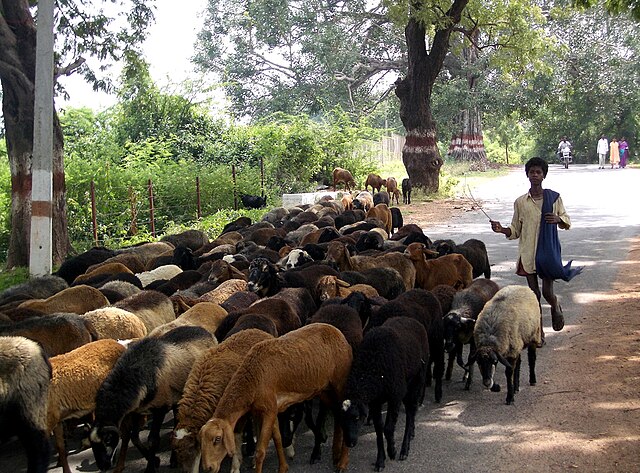The Yuezhi (Chinese: 月氏; pinyin: Yuèzhī, Ròuzhī or Rùzhī; Wade–Giles: Yüeh4-chih1, Jou4-chih1 or Ju4-chih1;) were an ancient people first described in Chinese histories as nomadic pastoralists living in an arid grassland area in the western part of the modern Chinese province of Gansu, during the 1st millennium BC. After a major defeat at the hands of the Xiongnu in 176 BC, the Yuezhi split into two groups migrating in different directions: the Greater Yuezhi (Dà Yuèzhī 大月氏) and Lesser Yuezhi (Xiǎo Yuèzhī 小月氏). This started a complex domino effect that radiated in all directions and, in the process, set the course of history for much of Asia for centuries to come.
Image: Noin Ula nobleman and priest over fire altar
Image: Yuezhi migrations
Figures in one of the embroidered carpets of the Xiongnu Noin-Ula burial site, a luxury item probably imported from Bactria. They are thought to represent Yuezhis. 1st century BC - 1st century AD.
A later mural (c. 618–712 AD) from the Mogao Caves, depicting the Chinese mission of Zhang Qian to the Yuezhi in 126 BC.
Nomadic pastoralism is a form of pastoralism in which livestock are herded in order to seek for fresh pastures on which to graze. True nomads follow an irregular pattern of movement, in contrast with transhumance, where seasonal pastures are fixed. However, this distinction is often not observed and the term 'nomad' used for both—and in historical cases the regularity of movements is often unknown in any case. The herded livestock include cattle, water buffalo, yaks, llamas, sheep, goats, reindeer, horses, donkeys or camels, or mixtures of species. Nomadic pastoralism is commonly practised in regions with little arable land, typically in the developing world, especially in the steppe lands north of the agricultural zone of Eurasia.
A young Maasai cattle herder in Kenya.
Reindeer milking in a forest; western Finnmark, late 1800s
A boy herding a flock of sheep in India
A camel trader in Hargeisa, Somaliland.








